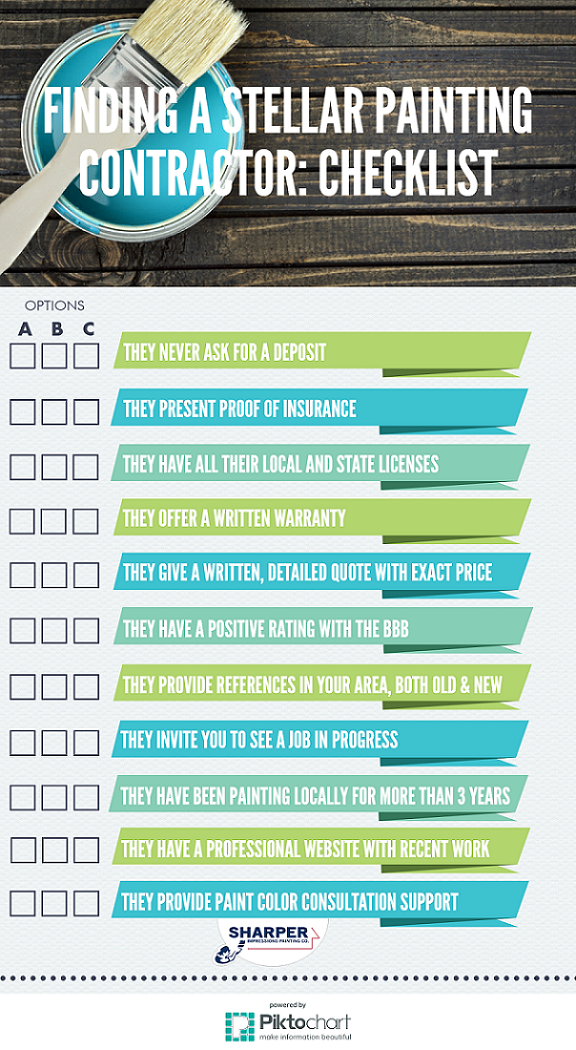Step-By-Step Inside Paint Tips For An Expert Finish
Step-By-Step Inside Paint Tips For An Expert Finish
Blog Article
Staff Writer-Pehrson Weinstein
When it comes to achieving a professional completed with your indoor painting project, interest to information is key. From choosing the best paint and devices to carrying out the paint process meticulously, each action plays a vital role in the last outcome. Nevertheless, there is one facet commonly forgot yet vital for a flawless coating-- the value of appropriate ventilation throughout the paint process. This often underestimated factor can substantially affect the overall quality of your paint job. Highly recommended Online site to understand more concerning exactly how air flow can boost your paint outcomes?
Selecting the Right Paint and Tools
Wondering which paint and devices are best for your indoor painting job? When it comes to selecting the appropriate paint, consider variables like the sort of surface area you're repainting, the desired finish, and the shade options offered. For wall surfaces, a latex paint is frequently the best choice as a result of its sturdiness, very easy cleanup, and quick drying out time. If you're painting a high-traffic location like a corridor or kitchen, a semi-gloss or satin finish may be more suitable as they're less complicated to clean up.
When it comes to devices, investing in high-quality brushes and rollers can make a significant difference in the final end result of your paint work. Look for brushes with dense bristles that are suitable for the type of paint you're using. Roller covers been available in different snooze sizes, with much shorter snoozes being optimal for smooth surfaces like walls and ceilings, while longer naps are better for textured surfaces.
Preparing Your Space for Paint
To guarantee a successful indoor painting job, proper prep work of your room is crucial. Begin by getting rid of furniture from the area or moving it to the facility and covering it with plastic sheets. Next, take down any kind of decors, change plates, and electrical outlet covers. Use painter's tape to protect walls, trim, and any kind of locations you do not intend to paint. Load holes and splits in the wall surfaces with spackling compound, then sand them smooth when dry. Dust and tidy the walls to make certain proper paint attachment.
After preparing the wall surfaces, set drop cloths to protect your floorings. If you're painting the ceiling, cover the whole floor location with ground cloth, protecting them in place with painter's tape. Make certain appropriate ventilation by opening windows or making use of fans to assist with drying and to reduce the fumes. Finally, collect all your painting materials in one location to have every little thing you need available. Taking the time to prepare your area will make the paint process smoother and help you achieve a specialist coating.
Performing the Painting Process
Begin by choosing the ideal paint shade and finish for the room you're repainting. Take into consideration the mood you want to produce and exactly how natural light impacts the color throughout the day. When you have your paint, gather top quality brushes, rollers, painter's tape, and drop cloths. Before beginning, make sure the walls are tidy and completely dry.
Begin by cutting in the edges of the walls and around trim with a brush. Then, make use of a roller to cover larger locations, operating in small areas. online exterior house color tool in mind to maintain a wet edge to avoid noticeable lap marks. Apply web link for a professional surface, if required.
When paint doors and trim, utilize a smaller brush for precision. Work systematically, using thin, also layers. Eliminate the painter's tape while the paint is still slightly damp to prevent peeling.
Allow the paint to completely dry totally before relocating furniture back right into area. Take your time and pay attention to detail for a flawless surface that will certainly transform the appearance of your room.
Final thought
Now that you have followed these detailed pointers for painting your inside, you're well on your way to attaining a professional surface.
By selecting the appropriate paint and devices, preparing your room effectively, and carrying out the paint process with treatment, you can change your home into a wonderfully painted area.
Remember to take your time and delight in the process for the very best results. Delighted painting!
